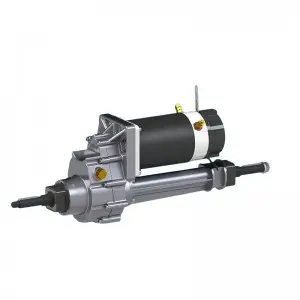The transaxle is an important part of your vehicle’s drivetrain, and understanding its function and the effects of an illuminated transaxle light is critical to maintaining the health and performance of your vehicle. When the transaxle light comes on, it can indicate a range of potential problems that require attention. In this article, we’ll discuss the transaxle, its importance in a vehicle, and what it means when the transaxle light comes on.
The transaxle is a critical part of a front-wheel drive vehicle’s drivetrain. It combines the functions of the transmission, axle and differential into one integrated component. This design allows for a more compact, more efficient layout and improves weight distribution and handling. The transaxle is responsible for transferring power from the engine to the drive wheels, allowing the vehicle to move forward or reverse.
One of the most important functions of a transaxle is to provide the proper gear ratio for the vehicle’s speed and load conditions. This is accomplished via the transaxle’s transmission assembly, which allows the driver to shift between different gears to optimize performance and fuel efficiency. Additionally, the transaxle contains a differential, which distributes power from the transmission to the drive wheels while allowing them to rotate at different speeds when cornering.
When the transaxle light comes on, it is a warning sign that there may be a problem with the transaxle or its associated components. The specific reason why the light comes on can vary, but it usually indicates a problem such as low transmission fluid level, overheating, or mechanical failure. It is important to address the transaxle light promptly to prevent potential damage to the vehicle and ensure safe operation.
A low transmission fluid level is a common cause of the transaxle light coming on. Transmission fluid is essential for lubricating and cooling the moving parts within the transaxle. When the fluid level is low, it can cause increased friction and heat, potentially damaging transaxle components. Checking the transmission fluid and topping it up to the recommended level will usually resolve the problem and prevent further damage.
An overheated transaxle can also trigger the transaxle light. This can occur due to heavy loads, towing, or driving in extreme conditions. When the transaxle overheats, it can cause the fluid to rupture and damage internal components. Allowing the transaxle to cool and avoiding undue stress on the vehicle can help prevent overheating and subsequent transaxle problems.
Mechanical problems within the transaxle, such as worn gears, bearings, or seals, may also cause the transaxle light to come on. These problems may require professional diagnosis and repair by a qualified mechanic. Ignoring mechanical problems can lead to further damage and possibly complete transaxle failure, requiring expensive repairs or replacements.
In some cases, the transaxle light may also indicate an electrical or sensor-related problem. Even if there’s no actual problem with the transaxle itself, a faulty sensor or wiring could trigger the light. Diagnosing and resolving these electrical problems may require specialized diagnostic equipment and expertise.
When the transaxle light comes on, it’s important to resolve the problem promptly. Ignoring warnings may result in more serious damage and safety hazards. If the transaxle light comes on while driving, it is recommended to park in a safe location, turn off the vehicle, and consult the owner’s manual for guidance on appropriate steps to take.
In summary, the transaxle plays a vital role in your vehicle’s driveline, and the transaxle light is an important warning indicator of potential problems. Understanding the function of the transaxle and what a transaxle light means can help owners take appropriate steps to maintain vehicle performance and safety. Regular maintenance, including checking transmission fluid levels and promptly addressing any warning lights, is critical to maintaining the health and longevity of the transaxle and entire vehicle.
Post time: Jul-15-2024


